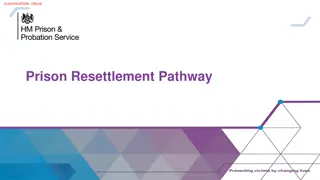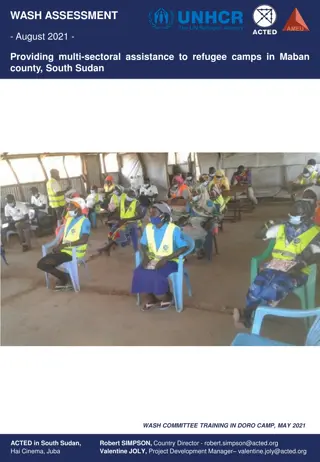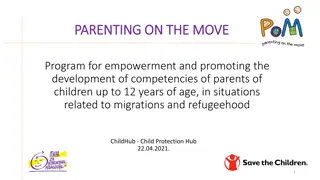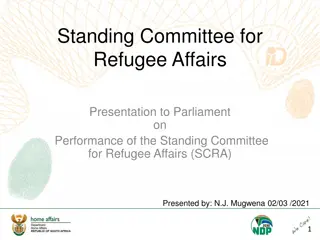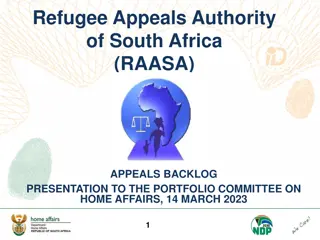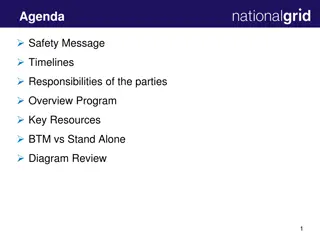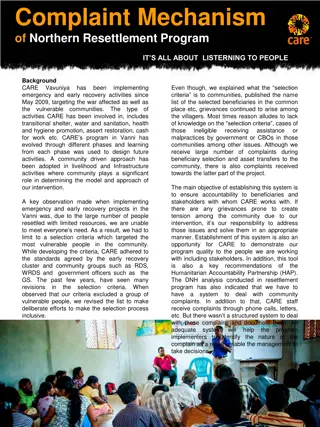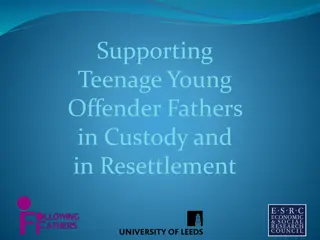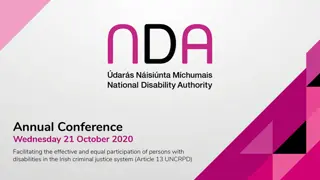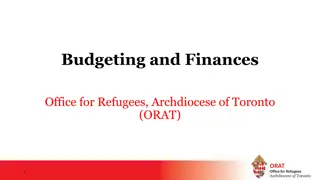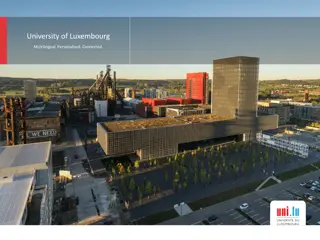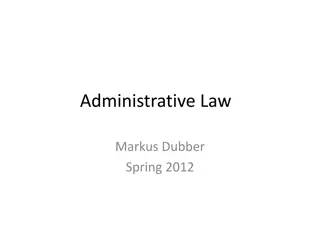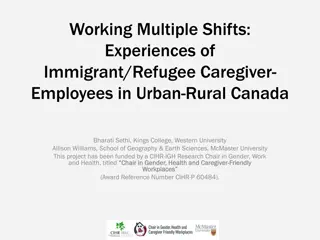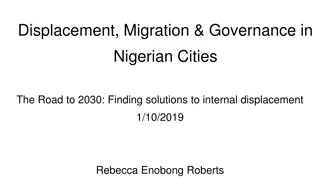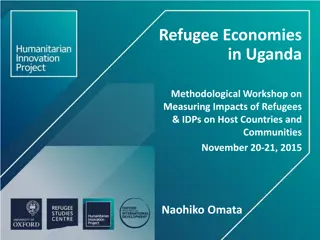Massachusetts Refugee Resettlement Program Overview
The Massachusetts Refugee Resettlement Program provides essential services to refugees, aiming to promote their self-sufficiency and integration into society. Established in 1985, the program offers cash and medical assistance, employment services, and foster care for minors, among other support. Learn about the history, mission, funding, and services provided by the program in this draft document.
Download Presentation

Please find below an Image/Link to download the presentation.
The content on the website is provided AS IS for your information and personal use only. It may not be sold, licensed, or shared on other websites without obtaining consent from the author.If you encounter any issues during the download, it is possible that the publisher has removed the file from their server.
You are allowed to download the files provided on this website for personal or commercial use, subject to the condition that they are used lawfully. All files are the property of their respective owners.
The content on the website is provided AS IS for your information and personal use only. It may not be sold, licensed, or shared on other websites without obtaining consent from the author.
E N D
Presentation Transcript
Overview of MA Refugee Resettlement Program December 8, 2015 DRAFT (for BBA 12/15/15 brown bag)
Draft for Policy Discussion Only HISTORY MA Office for Refugees and Immigrants (ORI) and the Federal Refugee Act of 1980 In 1985, the Massachusetts Office for Refugee Resettlement was designated by MA Executive Order 257 to be responsible for refugee affairs in the state. In 1992, the state legislature established the Office for Refugees and Immigrants (ORI). MGL c. 6, 205-207. The ORI Executive Director serves as the State Refugee Coordinator in accord with the Refugee Act of 1980 and state law. MGL c. 6, 206. Federal Refugee Act of 1980: Assistance and services funded under this section shall be provided to refugees without regard to race, religion, nationality, sex, or political opinion. 8 USC 1522 (a)(5) Purpose of ORI: To promote the full participation of refugees and immigrants as self-sufficient individuals and families in the economic, social, and civic life of the commonwealth. MGL c. 6, 205 2
Draft for Policy Discussion Only MISSION MA Office of Refugees and Immigrants FUNDING AND SERVICES: The federal Office of Refugee Resettlement (ORR) awards grants to ORI to administer a variety of refugee services, including up to 8 months of cash and medical assistance, and up to 5 years of employment services, a medical screening upon arrival (provided through an agreement with the MA Dept of Public Health) and foster care for refugee minors (provided through an agreement with the MA Dept of Children and Families). ORI contracts with a network of providers for the delivery of direct services to refugees. Providers include Refugee Resettlement Agencies and ethnic community-based organizations, which all have the capacity to serve the diverse cultural and linguistic needs of newcomer populations. 3
Draft for Policy Discussion Only BACKGROUND: U.S. Refugee Admissions Program Humanitarian Program A refugee is someone who has fled from his or her home country and cannot return because he or she has a well-founded fear of persecution based on religion, race, nationality, political opinion or membership in a particular social group More than 60 nationalities assisted within the United States (over 20 nationalities in Massachusetts) Currently top countries from which refugees resettle are Bhutan, Burma, Iraq, and Somalia Emerging groups will be from the Democratic Republic of Congo and Syria Refugee Admissions Program, est. 1975 2015 ceiling of 70,000 refugees nationwide 2016 ceiling of 85,000 refugees nationwide Admissions Program Agencies The Bureau of Population, Refugees and Migration (PRM), U.S. Department of State. U.S. Citizenship and Immigration Services (USCIS), U.S. Department of Homeland Security (DHS). The Office of Refugee Resettlement (ORR), U.S. Department of Health and Human Services. Nongovernmental Refugee Resettlement Agencies (with a combined total of about 350 affiliated offices across the U.S.). 4
Refugee Processing Security Screening & Timeline The U.S. Department of State, in a Background Briefing on Refugee Screening and Admissions held on Nov. 17, 2015, stated that: all refugees of all nationalities considered for admission to the U.S. undergo intensive security screening, and this involves multiple federal intelligence, security and law enforcement agencies. . . . The safeguards that are used include biometrics, or fingerprint and biometric checks, and a lengthy in-person overseas interview that is carried out by specially trained DHS [Department of Homeland Security] officers. . . .Mindful of the particular conditions of the Syria crisis, Syrian refugees go through additional forms of security screening. And we continue to examine options for further enhancement for screening refugees, the details of which are classified. But the classified details are regularly shared with relevant congressional committees. DOS reports that: Worldwide, the average processing time is about one year to 18 months. But every case is different, and processing times vary. 5
The Screening Process for Refugee Entry Into the U.S. (Source:https://www.whitehouse.gov/blog/2015/11/20/infographic-screening-process- refugee-entry-united-states) Step 1: Many refugee applicants identify themselves to the U.N. Refugee Agency, UNHCR. UNHCR, then: Collects identifying documents Performs initial assessment Collects biodata: name, address, birthday, place of birth, etc. Collects biometrics: iris scans (for Syrians, and other refugee populations in the Middle East) Interviews applicants to confirm refugee status and the need for resettlement Initial information checked again Only applicants who are strong candidates for resettlement move forward (less than 1% of global refugee population). 6
The Screening Process for Refugee Entry Into the U.S., cont. Step 2: Applicants are received by a federally-funded Resettlement Support Center (RSC) which: Collects identifying documents Creates an applicant file Compiles information to conduct biographic security checks Step 3: U.S. security agencies screen the candidate, including: National Counterterrorism Center/Intelligence Community FBI Department of Homeland Security State Department 7
The Screening Process for Refugee Entry Into the U.S., cont. The screening looks for indicators, like: Information that the individual is a security risk Connections to known bad actors Outstanding warrants/immigration or criminal violations DHS conducts an enhanced review of Syrian cases, which may be referred to USCIS Fraud Detection and National Security Directorate for review. Research that is used by the interviewing officer informs lines of question related to the applicant s eligibility and credibility. 8
The Screening Process for Refugee Entry Into the U.S., cont. Step 4: Department of Homeland Security (DHS)/USCIS interview: Interviews are conducted by USCIS Officers specially trained for interviews Fingerprints are collected and submitted (biometric check) Re-interviews can be conducted if fingerprint results or new information raises questions. If new biographic information is identified by USCIS at an interview, additional security checks on the information are conducted. USCIS may place a case on hold to do additional research or investigation. Otherwise, the process continues. 9
The Screening Process for Refugee Entry Into the U.S., cont. Step 5: Biometric security checks: Applicant s fingerprints are taken by U.S. government employees Fingerprints are screened against the FBI s biometric database. Fingerprints are screened against the DHS biometric database, containing watch-list information and previous immigration encounters in the U.S. and overseas. Fingerprints are screened against the U.S. Department of Defense biometric database, which includes fingerprint records captured in Iraq and other locations. If not already halted, this is the end point for cases with security concerns. Otherwise, the process continues. 10
The Screening Process for Refugee Entry Into the U.S., cont. Step 6: Medical check: The need for medical screening is determined This is the end point for cases denied due to medical reasons. Refugees may be provided medical treatment for communicable diseases such as tuberculosis. Step 7: Cultural orientation and assignment to domestic resettlement locations: Applicants complete cultural orientation classes. An assessment is made by a U.S.-based non-governmental organization to determine the best resettlement location. Considerations may include family ties in a certain geographic area, and health needs. 11
The Screening Process for Refugee Entry Into the U.S., cont. Step 8: Travel: International Organization for Migration books travel Prior to entry in the United States, applicants are subject to: Screening from the U.S. Customs and Border Protection s National Targeting Center-Passenger The Transportation Security Administration s Secure Flight Program This is the end point for some applicants. Applicants who have no flags continue the process. U.S. Arrival: All refugees are required to apply for a green card within a year of their arrival to the United States, which triggers: Another set of security procedures with the U.S. government. 12
YEARLY CONSULTATION with State Partners re Refugee Admissions to the State The number of overseas refugees to be resettled by a local Resettlement Agency is determined by the Department of State/Bureau of Population, Refugees and Migration (PRM) after reviewing the local Refugee Resettlement Agencies yearly proposal, referred to as an Abstract. Abstract/State Approval Process Local Resettlement Agencies prepare an Abstract which outlines the ability of the resettlement office, other service providers, and community capacity to receive and serve the proposed number of refugees, taking into account housing, employment, education, public transportation, and medical resources. While preparing their Abstract, the local Refugee Resettlement Agencies initiate a local consultation process with local stakeholders to discuss the proposed number of overseas refugees. The Agencies also request State Refugee Coordinator and the State Refugee Health Coordinator involvement with the consultations. PRM forwards copies of submitted Abstractsto the State Refugee Coordinator for the Coordinator s review and comment. The MA State Refugee Coordinator (ORI) reviews each Abstract (with input from the State Refugee Health Coordinator), and then reviews any ORI concerns with the local Resettlement Agencies prior to providing detailed comments and recommendations to PRM on the local resettlement plans. 13
QUARTERLY CONSULTATION with State Partners re Quarterly Projections for Refugee Admissions to State PRM requires all local Refugee Resettlement Agencies to convene quarterly consultations with stakeholders involved in the resettlement process. Stakeholders include local governance, community based organizations, state and local public agencies providing services to refugees, the state refugee coordinator (ORI) and the state refugee health coordinator (DPH). The consultations in Massachusetts take place in-person around the first month of each federal fiscal year quarter (October, January, April, and July) Since April of 2014, ORI has supported Resettlement Agencies coordinating their previously separate consultations into formalized and joint Welcoming Network consultations held regionally. The Welcoming Networks are organized into four consultations to cover five regions of the Commonwealth: Hampden County (Springfield, West Springfield, Westfield); Merrimack Region (Lowell); Worcester County (Worcester); and Eastern Massachusetts, which includes the North Shore (Lynn) and Suffolk County (Boston and Chelsea) regions. During each consultation, year to date refugee arrivals and projections covering the upcoming quarter and the annual federal fiscal year, and other pertinent data, are provided. Resettlement agencies also share the characteristics of arriving refugee populations including nationality, ethnicity, average family size and composition, language and education background, and medical conditions. 14
DEMOGRAPHICS Massachusetts Refugee Resettlement Program Federal Fiscal Year 2011 New Enrollees Refugees Resettled 1556 Other Categories 425 Number of Syrians 0 Top three Countries of Origin Bhutan Iraq Burma 1981 2012 2198 1611 587 1 Bhutan Iraq Somalia 2013 2403 1875 528 8 Iraq Bhutan Somalia 2014 2450 2017 435 4 Iraq Bhutan Somalia 2015 2086 1759 327 85 Iraq Somalia Bhutan 2016 2244 projected 1750 1925 projected 446 Unknown Unknown projected (7 individuals as of October 31, 2015) (Similar Populations Anticipated) 15
Draft for Policy Discussion Only FFY16 Resettlement Agencies in Massachusetts PRM contracts with Refugee Resettlement Agencies, listed below, to receive overseas refugee arrivals and to provide reception and placement services. ORI also contracts with these Refugee Resettlement Agencies to provide services under the Massachusetts Refugee Resettlement Program. Ascentria Care Alliance West Springfield Worcester Catholic Charities of Boston Catholic Charities of Worcester International Institute of New England Boston Lowell Jewish Family Service of MetroWest Jewish Family Services of Western MA Refugee and Immigrant Assistance Center Boston Worcester 16
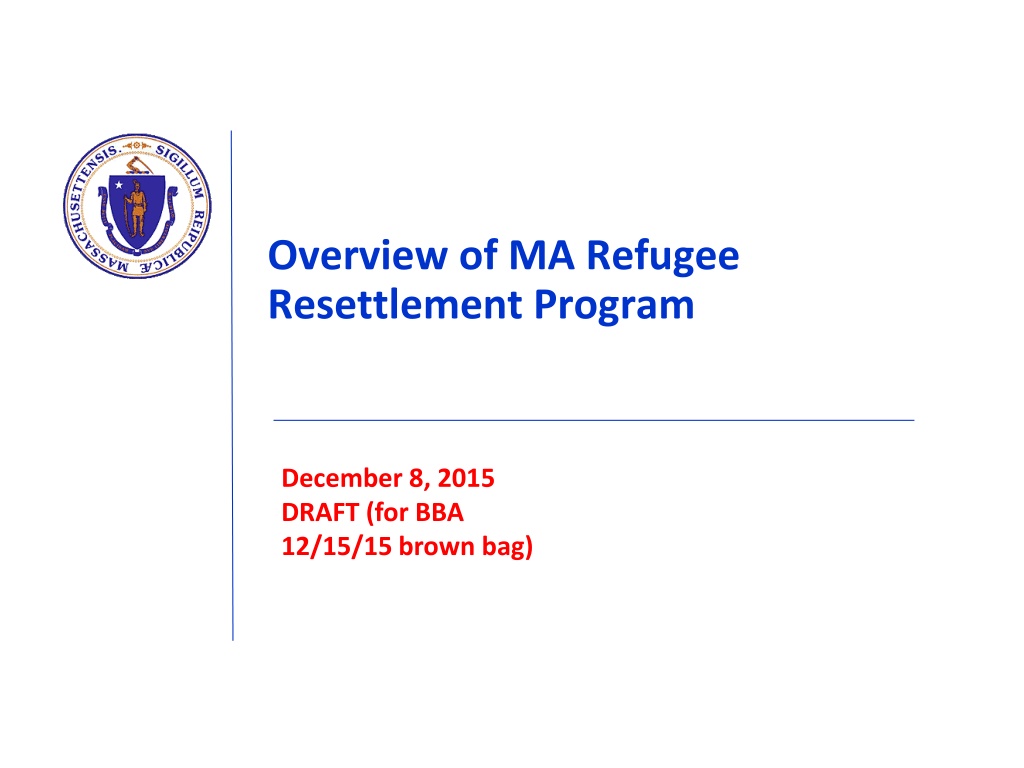
 undefined
undefined








